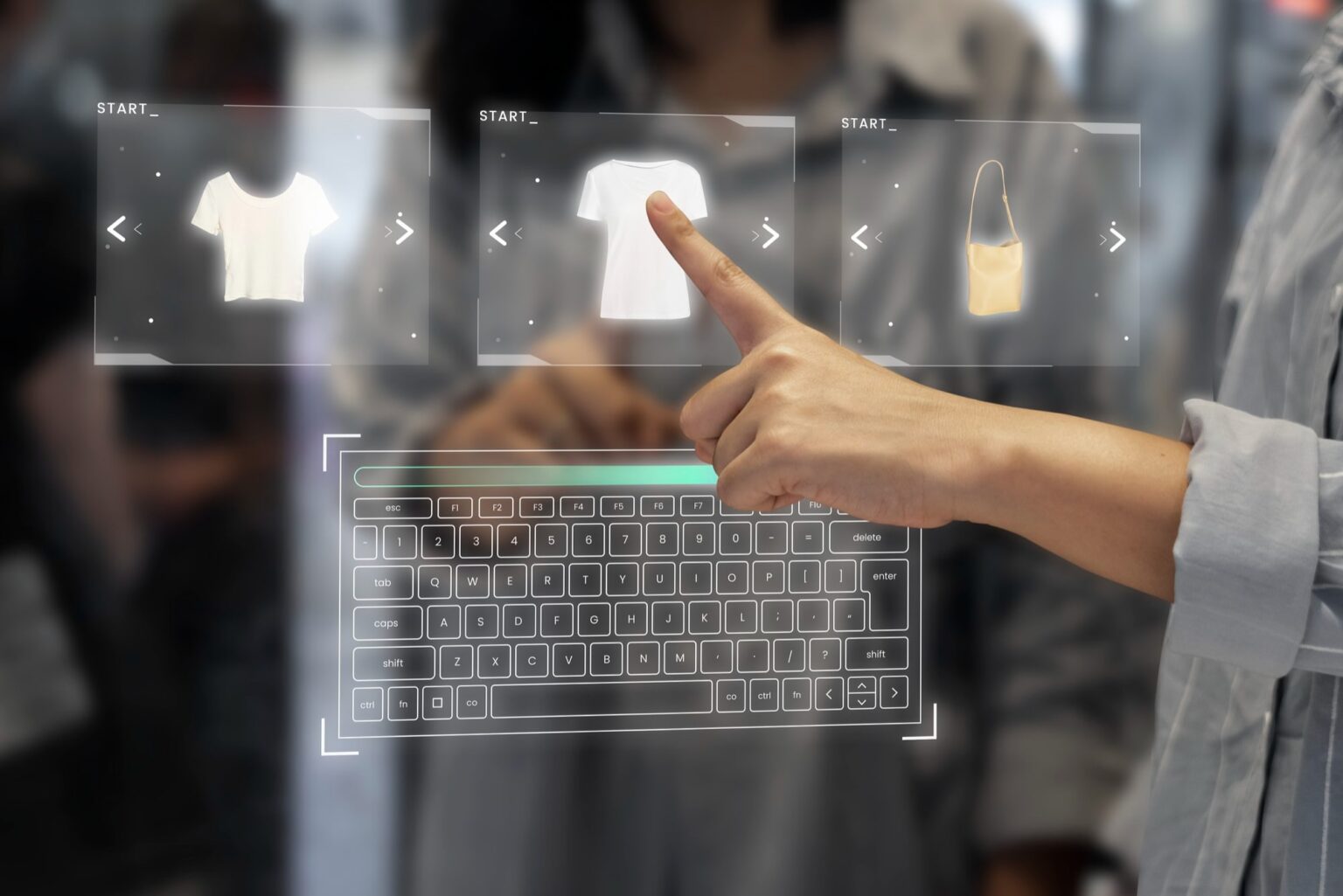Augmented reality (AR) is revolutionizing the retail industry by transforming the shopping experience and enabling personalized marketing strategies. AR technology overlays digital content onto the real-world environment, allowing customers to interact with virtual elements while they shop. Here are key ways AR is revolutionizing retail:
- Virtual Try-On: AR enables virtual try-on experiences, allowing customers to see how products such as clothing, accessories, or cosmetics would look on them without physically trying them on. Virtual fitting rooms and mirror applications use AR to superimpose virtual garments or makeup onto the customer’s image in real-time, providing an immersive and convenient way to make purchase decisions.
- Product Visualization: AR allows customers to visualize products in their own environment before making a purchase. Using AR apps or smart devices, customers can place virtual furniture, home decor, or appliances in their living spaces, giving them a realistic sense of how the products would fit and look in their homes. This helps customers make more informed buying decisions and reduces the need for returns.
- Enhanced Product Information: AR enhances product information by overlaying digital content, such as videos, 3D models, or interactive elements, onto physical products. Customers can scan product labels or packaging with their smartphones to access additional details, product demonstrations, user reviews, or related product recommendations. This augmented information helps customers better understand the features and benefits of products, facilitating informed purchases.
- Personalized Marketing and Targeted Ads: AR enables personalized marketing experiences by tailoring content and offers based on individual customer preferences and behaviors. AR-powered mobile apps can use location data and customer profiles to deliver targeted ads, promotions, or recommendations to shoppers as they navigate physical stores. This personalized approach increases engagement, improves conversion rates, and enhances customer satisfaction.
- Gamification and Interactive Experiences: AR adds an element of fun and interactivity to the shopping experience through gamification. Retailers can create AR-based games, challenges, or scavenger hunts within their stores or shopping apps, engaging customers and incentivizing them to explore and interact with products. This not only increases customer engagement but also creates memorable experiences that encourage repeat visits and brand loyalty.
- Virtual Storefronts and Pop-up Shops: AR enables retailers to create virtual storefronts or pop-up shops in various locations or even within customers’ homes. Through AR apps or smart glasses, customers can access a virtual store experience, browse products, make purchases, and have them delivered to their doorstep. This flexibility extends the reach of retailers, provides convenience to customers, and reduces the need for physical retail spaces.
- Data Analytics and Insights: AR-powered retail experiences generate valuable data and insights about customer preferences, behaviors, and engagement patterns. Retailers can analyze this data to gain a deeper understanding of their target audience, optimize marketing strategies, personalize offerings, and improve the overall customer experience. Data-driven insights help retailers make informed business decisions and drive customer-centric initiatives.
- Remote Shopping and Consultations: AR enables remote shopping experiences and virtual consultations, particularly relevant during times of social distancing or when physical access to stores is limited. Customers can engage with retail associates or experts through AR-powered video calls, where they can virtually explore products, ask questions, and receive personalized recommendations, replicating the in-store assistance experience from the comfort of their homes.
AR is revolutionizing the retail industry by creating immersive, interactive, and personalized shopping experiences. As technology continues to advance and AR becomes more accessible, retailers can leverage its potential to attract customers, boost sales, and differentiate themselves in a competitive market.



